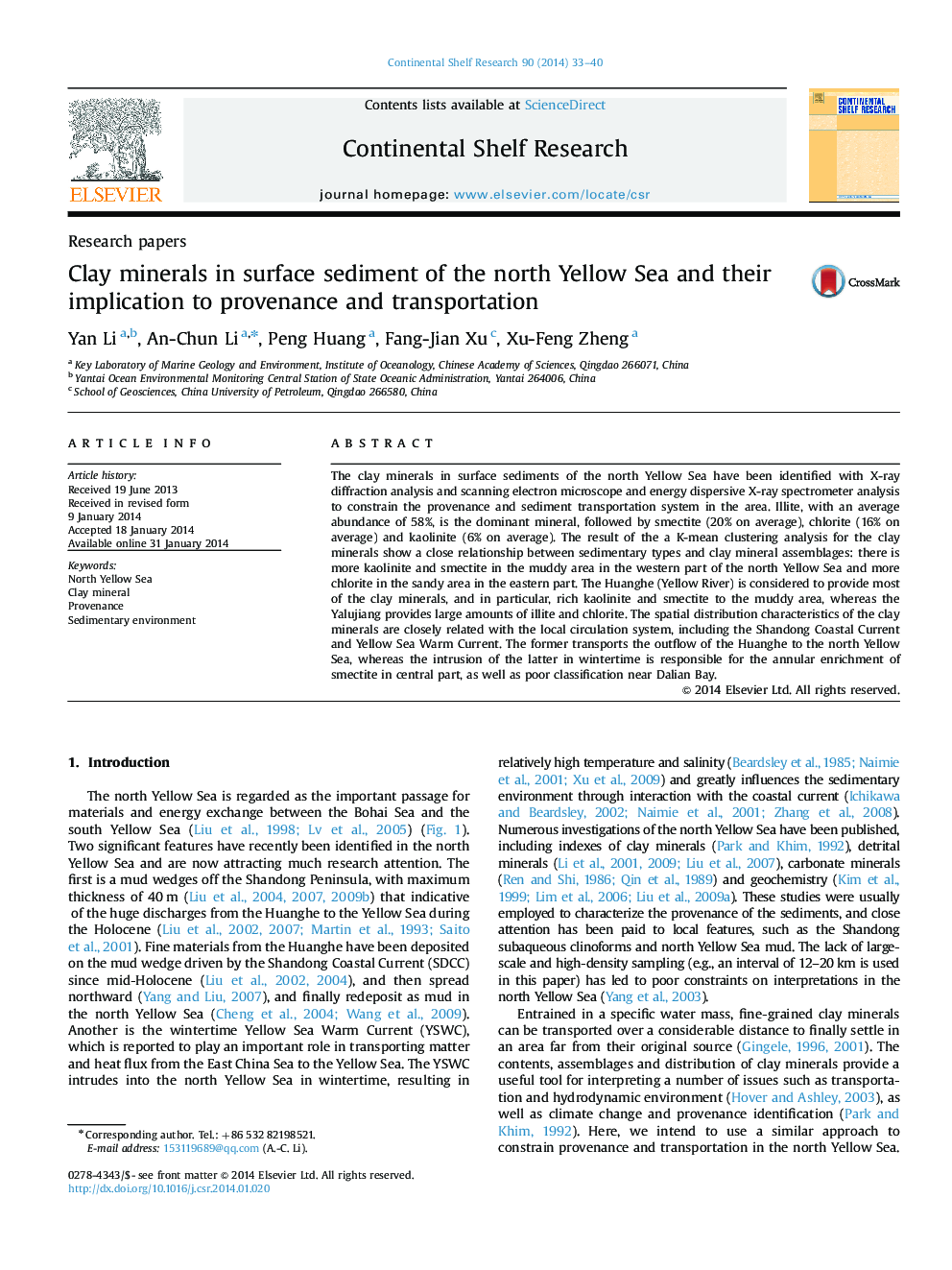| Article ID | Journal | Published Year | Pages | File Type |
|---|---|---|---|---|
| 4531796 | Continental Shelf Research | 2014 | 8 Pages |
Abstract
The clay minerals in surface sediments of the north Yellow Sea have been identified with X-ray diffraction analysis and scanning electron microscope and energy dispersive X-ray spectrometer analysis to constrain the provenance and sediment transportation system in the area. Illite, with an average abundance of 58%, is the dominant mineral, followed by smectite (20% on average), chlorite (16% on average) and kaolinite (6% on average). The result of the a K-mean clustering analysis for the clay minerals show a close relationship between sedimentary types and clay mineral assemblages: there is more kaolinite and smectite in the muddy area in the western part of the north Yellow Sea and more chlorite in the sandy area in the eastern part. The Huanghe (Yellow River) is considered to provide most of the clay minerals, and in particular, rich kaolinite and smectite to the muddy area, whereas the Yalujiang provides large amounts of illite and chlorite. The spatial distribution characteristics of the clay minerals are closely related with the local circulation system, including the Shandong Coastal Current and Yellow Sea Warm Current. The former transports the outflow of the Huanghe to the north Yellow Sea, whereas the intrusion of the latter in wintertime is responsible for the annular enrichment of smectite in central part, as well as poor classification near Dalian Bay.
Related Topics
Physical Sciences and Engineering
Earth and Planetary Sciences
Geology
Authors
Yan Li, An-Chun Li, Peng Huang, Fang-Jian Xu, Xu-Feng Zheng,
